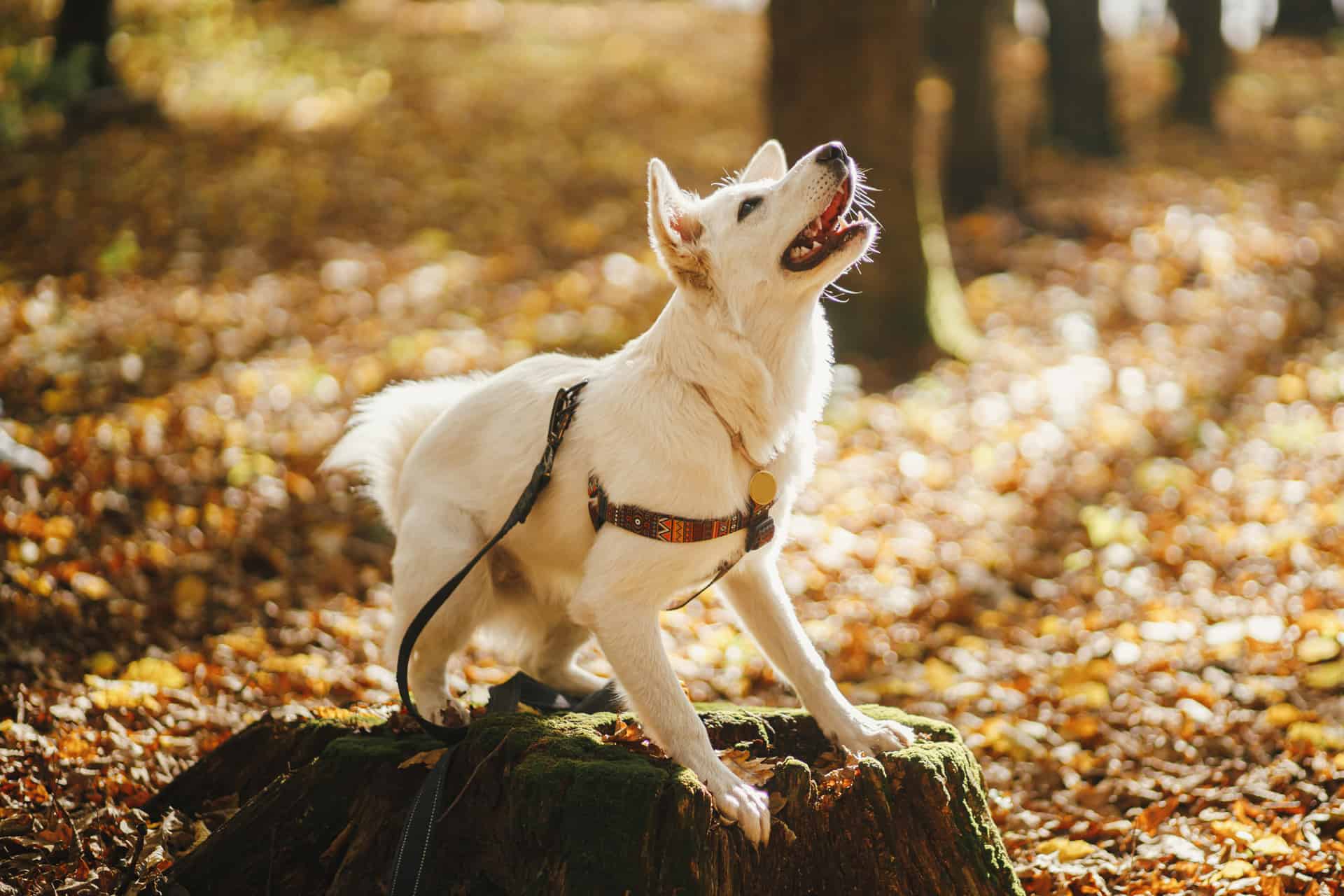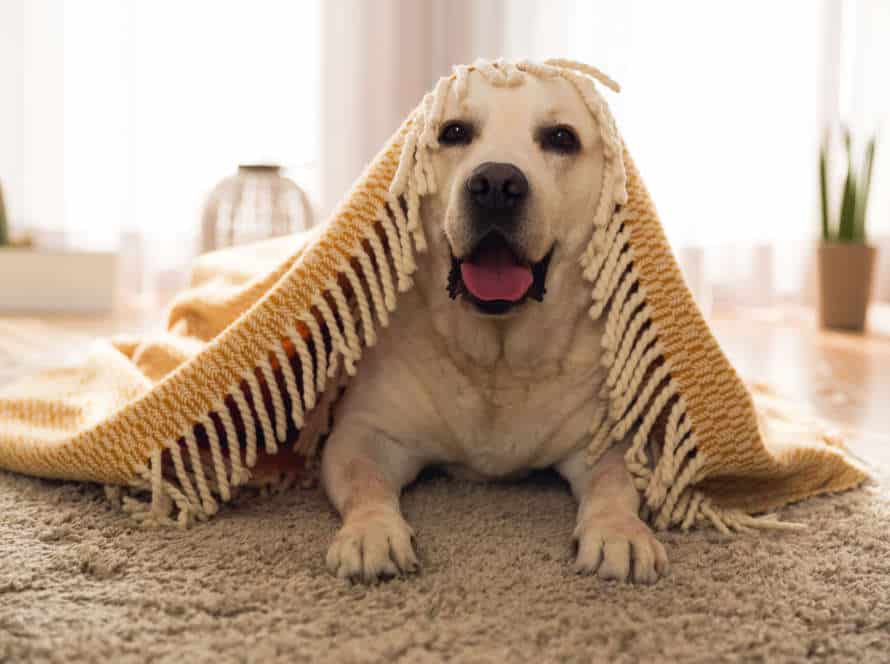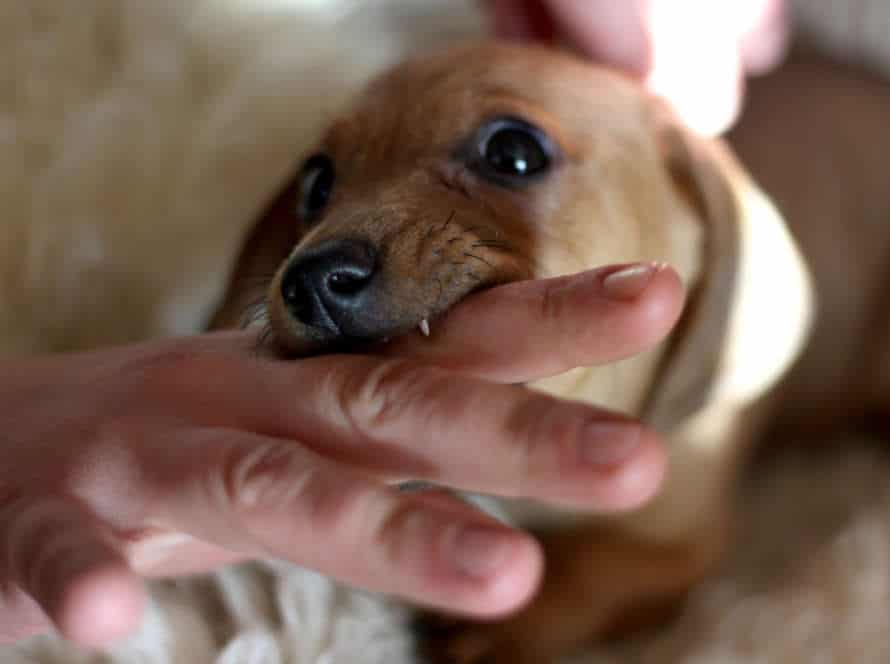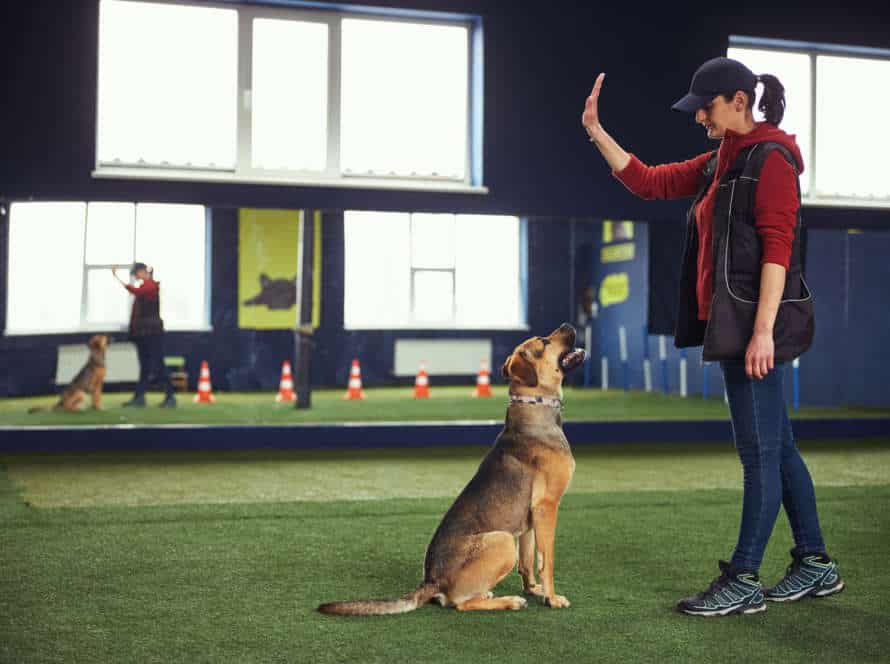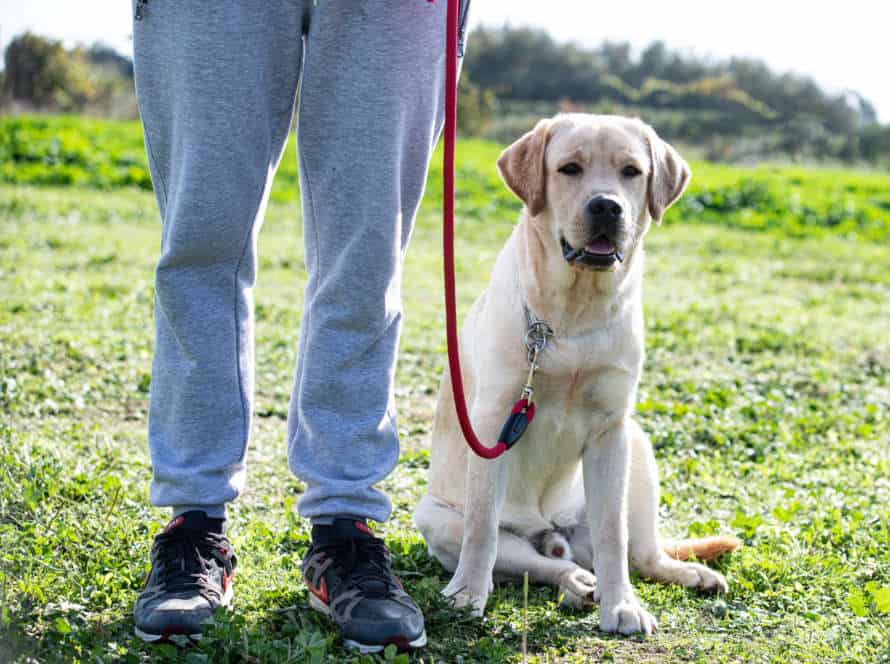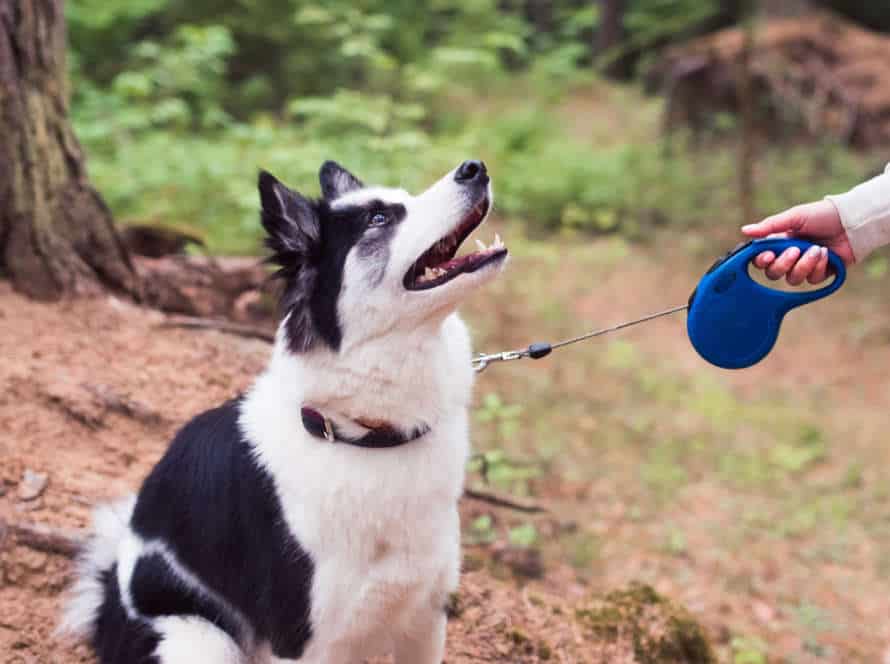How to Safely Walk a Leash Reactive Dog in Public
Walking a leash reactive pup can be hectic! Here are some tips for safely strolling your furry friend:
- Spot and dodge triggers: Maintain a safe distance from things that cause fear or anger in your pup, such as other pooches, loud sounds, or strange people.
- Use the right harness: With a harness, you’ll have better control over your pup and reduce the risk of harm from pulling or unexpected movements.
- Educate your dog to focus on you: Train your pup to pay heed to you and obey your orders. Reward your pup for good behavior and switch their attention during nerve-racking scenarios.
- Take a walk during less crowded hours: Steer clear of jam-packed areas and take a stroll during peaceful times of the day to minimize exposure to triggers.
- Get help from a professional: In case your pet’s behavior causes a threat to themselves or others, get aid from a proficient dog trainer or behaviorist.
Pro tip: Safety should always come first when walking a leash reactive pup. With time, practice, and the right precautions, you can keep your pup cheerful and healthy while having fun outdoors.
Understanding Leash Reactivity
Leash reactivity can be tricky to handle. To manage it properly, and keep your pup safe, you need to know why your dog is leash reactive. Knowing the behavior and its causes can help you manage it better, and even make it go away! Let’s find out more.
What is Leash Reactivity?
Leash reactivity is when a dog reacts strongly to other dogs, people, or stimuli while on a leash. This can make walking them tricky for pet owners.
Symptoms:
- Pulling on the leash
- Growling
- Barking
- Lunging
- Snarling
Triggers:
- Fear
- Territorial behavior
- Negative experiences
- Lack of socialization
Causes:
- Training methods
- Genes
- Medical issues
- Environmental stress
For walking:
- Use a front clip harness or gentle leader.
- Work with a trainer on positive reinforcement techniques to desensitize reactions.
- Exercise and mental stimulation can reduce stress.
- Know local leash laws and stay composed.
Signs of Leash Reactivity in Dogs
Is your pup acting strangely on the leash? It could be leash reactivity. Signs of this include:
- Lunging or pulling towards other pooches.
- Growling or barking at other dogs.
- Chasing or attacking other furballs.
- Panting, lip licking, or tail tucking (showing signs of fear, anxiety, or stress).
Leash reactivity may be caused by fear, frustration, lack of socialization, or previous bad experiences.
When walking a leash-reactive pup, use a front-clip harness or head collar for more control. Avoid crowded areas and give lots of positive reinforcement for good behavior. Additionally, consider consulting a professional dog trainer. They can help address the reason for the reactivity and find solutions.
Why Do Dogs Become Leash Reactive?
Dogs become leash reactive due to fear, anxiety, and lack of socialization. This is an issue when they display aggressive or anxious behavior while on a leash. As an owner, it’s essential to know how to safely walk a leash-reactive pup. Here are some tips:
- Use a front clip harness for better control.
- Avoid high dog-traffic areas.
- Train with positive reinforcement methods to keep them calm.
- Use treats, toys, and praise to redirect focus when they start to be reactive.
- Work with a pro trainer or behaviorist for personalized guide.
Safety is key when walking a leash-reactive pup. Pro Tip: Stay calm and patient. It takes time, effort, and consistency to train them, so be consistent and stay positive.
The Psychology Behind Leash Reactivity
Leash reactivity is an issue many pup parents face. It usually comes from fear, anxiety, or lack of training. To manage it, you must grasp the psychology behind your doggo’s behavior. With understanding and positive reinforcement, one can help their dog be more in control when on a leash. Let’s look at the psychology of leash reactivity and how to work with the pup to reduce it.
Understanding the Fight or Flight Response
The fight or flight response is an automatic reaction when we feel in danger. It helps us prepare to run or confront a threat.
With leash reactivity in dogs, understanding the fight or flight response can be a help. When a dog sees something or someone near, their fight or flight response is triggered. This leads to barking, lunging, or growling. It is their way of dealing with the perceived threat.
To manage leash reactivity, it is important to recognize early signs of reactive behavior. We must redirect their attention through positive reinforcement, training and calming techniques. We must never punish or force a reactive dog into a situation that triggers the behavior. This can worsen their anxiety and stress levels.
With patience, consistency, and proper management, leash reactivity in dogs can be corrected.
Impact of Learned Behaviors
Learned behaviors majorly affect dog behavior and leash reactivity. Dogs may develop reactive responses if they’ve been scolded or pulled on the leash when seeing other dogs. To manage leash reactivity, positive reinforcement training is essential. It helps the dog forget the negative behaviors and adopt new, better ones.
Exercise, socialization and mental stimulation can also help reduce leash reactivity. With the right approach, even the most problematic dogs can become confident and well-behaved companions.
How Reinforcement Shapes Leash Reactivity
Leash reactivity in dogs is a common behavioral problem. It happens when a dog reacts aggressively or fearfully to people, animals, or other dogs while on a leash.
Positive reinforcement techniques can help shape and improve this behavior. This is how reinforcement works:
- It teaches your dog to link positive experiences with desired behaviors.
- Using treats, praise, or toys to reward good behavior on a leash creates a strong positive association.
- It also helps change your dog’s emotional response to the leash and triggers that cause the reactivity.
Positive reinforcement focuses on rewarding good behavior, rather than punishing bad behavior. This eventually shapes and transforms leash reactivity.
With consistent reinforcement training and patience, leash reactivity can be managed and improved. This makes walking a reactive dog in public safer and more enjoyable for both the dog and the owner. Patience is the key to shaping leash reactivity in dogs.
Strategies for Walking a Leash Reactive Dog
Leash reactive dogs can be difficult to walk in public. To succeed, be proactive and plan ahead! Here are some tips for safe management of leash reactivity. Plus, tools and tricks to make walking your dog more enjoyable.
Start with Obedience Training
When it comes to walking a leash reactive dog in public, obedience training is key. This builds the fundamentals for proper behavior and control in a possibly stressful situation.
Here are some tips to help you:
- Start with basic obedience commands such as sit, stay, and come.
- Use positive reinforcement like treats to reward good behavior and following orders.
- Try walking in a calm atmosphere before taking your pup out in public.
- Use a well-fitted harness instead of a collar to make sure they don’t slip out of the leash.
- Gradually introduce your pup to new locations, people, and other animals in low-stress settings.
Pro tip: Be aware of your environment and your pup’s behavior. If they become too stressed, take them away from the situation. With patience and persistence, walking a leash reactive dog can be a more comfortable and enjoyable experience for both of you.
Use Positive Reinforcement Techniques
Positive reinforcement is a successful way to take your leash-reactive dog out in public. It focuses on rewarding good behavior instead of punishing bad behaviors, which can make your dog even more anxious and aggressive. Try these positive reinforcement techniques:
- Clicker Training – Use a clicker device when your dog does the right thing. Click it and give a treat as a reward.
- Treat-Based Training – Use treats for good behavior when walking your dog. Start with high-value treats and then switch to lower-value ones as your pup gets better.
- Keep Distance – Start in less busy areas and gradually move to busier places. Keep enough distance from other dogs and people so your dog focuses on you and the treats.
- Patience – Positive reinforcement takes time and patience, especially with leash-reactive dogs. Celebrate small successes and keep working on training your pup.
These techniques will help you and your pup walk safely in public.
Implement Structured Walking Strategies
Structured walking strategies can help you handle a leash-reactive dog in public. Here are some ideas:
- Utilize a front-clip harness or head halter to gain control.
- Train your dog with “Watch me” or “Focus” commands. Reward when they make eye contact.
- Keep your dog on a short leash to avoid lunging or pulling.
- Start with quiet, less crowded places to minimize distractions.
- Use positive reinforcement and stay calm if your dog displays reactive behavior.
Remember: Leash reactivity takes time and patience. Get professional help if needed. Pro Tip: Carry high-value treats and reward good behavior to reinforce positive experiences!
Managing Difficult Situations
Walking a leash reactive pup in public? Challenges ahead! To master the situation, you must find the perfect balance between avoiding an argument and controlling your pup. It is doable to master these difficulties while protecting yourself and your furry friend. Let’s check out how!
Identify Potential Triggers
When it comes to walking a leash-reactive pup in public, the first step is to spot potential triggers. Common ones are:
- Other pooches that bark or growl.
- People running, cycling or pushing something.
- Noises like construction work or fireworks.
- Unusual sights such as umbrellas or bins.
Once you know what sets your pup off, you can dodge, or use positive reinforcement training to help them cope better.
Avoidance Techniques
If you’re walking a leash-reactive dog, it’s essential to know how to manage difficult situations. Here are some tips to help:
- Choose routes with few people. Avoid busy streets or parks at peak hours. Walk your dog in less-frequented areas.
- Use visual barriers. Trees, walls and parked cars can create physical barriers between your dog and potential triggers.
- Create distance. If you spot someone or a dog, cross the street or walk in the opposite direction.
- Teach your dog a “watch me” command. It can help redirect your dog’s attention away from the trigger.
- Use a muzzle. It can prevent biting and make others feel safe.
- Remember to be proactive. Avoid triggers. With time and practice, you and your dog can stay safe while walking in public.
De-escalation Techniques
Leash-reactive dog walking in public can be tough and stressful. But, with the right de-escalation techniques, you can manage tricky situations and keep everyone safe.
Here are some de-escalation tips:
- Stay chilled out. Dogs can feel your emotions. So, stay cool and use slow, deep breaths to stay grounded.
- Steer clear of confrontation. When you see a trigger (dogs, people, etc.), keep your distance and don’t get into a confrontation.
- Use positive reinforcement. Use treats or toys to pull your dog’s attention away from the trigger and back to you.
- Create distance. If your dog is feeling too much, create some space between them and the trigger. Move to a quieter area and let your dog relax.
- Practice. Practice these de-escalation techniques often. That way, you and your dog will be more confident and better prepared for challenging situations.
Additional Support for Walking a Leash Reactive Dog
Walking a leash-reactive pup in public can be daunting. But, there’s help! Alternative tools, trainers and dog walkers can all provide support. Find what works for you and your pup to get the help you need.
Consider Working with a Professional Trainer
Have a leash-reactive or pulling pup? Get help from a professional dog trainer. They can teach you strategies such as positive reinforcement and desensitization. The trainer will identify triggers & show you how to manage & avoid them. This also strengthens your bond with your pup. Remember: Behavior changing takes time & consistency. Patience is key, plus always use positive reinforcement & patience when training.
Utilize Anxiety-Reducing Products
Got a leash-reactive pup? Utilizing anxiety-reducing products can make you feel more confident and in control when out walking them. Here are some helpful items:
- ThunderShirt – this snug fit shirt applies gentle, constant pressure to ease the dog’s anxiety.
- Calming supplements – like CBD treats or other anti-anxiety supplements can relax your pet.
- Head collar – A head halter collar gives you better control, making them feel secure and less likely to react.
- Treats – reward your dog for good behavior on walks with treats. This reinforces positive associations with being outside.
It’s important to consult the vet to get the best product and dosage for your pup. Always stay calm and in control when walking a leash-reactive dog for everyone’s safety.
Join a Community of Dog Owners with Reactive Dogs
Are you a dog owner with a reactive pooch? Joining a community of other dog owners can provide extra support and resources when walking your pup in public. Here are some advantages of being part of this type of group:
- Shared experiences: It can be comforting to be in a community where others have the same issues. Sharing stories and strategies can help you learn new ways to deal with your pup’s reactivity.
- Professional trainers: Some communities give you access to professional dog trainers. They can figure out why your doggo is behaving like this and teach you techniques to help them.
- Socialization: You can connect with other owners and arrange safe socialization opportunities for your furry friend to interact with other dogs. This can help them get over their reactivity.
Think about joining a local dog owners’ group or online forum. This way, you can get advice and support for walking your reactive pup safely in public.
Frequently Asked Questions
1. What does it mean when a dog is leash reactive?
Leash reactive dogs may exhibit aggressive behavior towards other dogs or people while on a leash, often due to feeling restrained or fearful in the situation.
2. How can I help my leash reactive dog feel more comfortable on walks?
Working with a professional dog trainer to build confidence and positive associations with the trigger, using calming techniques, and using a secure harness or muzzle, if needed, can all help your dog feel more comfortable on walks.
3. What should I do if I encounter another dog while walking my leash reactive dog?
It’s important to manage the situation by giving your dog space, using positive reinforcement techniques to redirect their attention, and calmly moving away from the trigger to avoid escalation.
4. Can medication help with leash reactive behavior?
Consulting with a veterinarian can help determine if medication may be a helpful tool in treating leash reactive behavior, in conjunction with training and behavior modification.
5. How can I communicate to others that my dog is leash reactive?
Using a visual cue, such as a leash or bandana labeled “leash reactive,” and communicating clearly with others can help prevent unexpected encounters and potential negative interactions.
6. Can leash reactive behavior be cured?
While leash reactive behavior may not be completely “cured,” through dedicated training and behavior modification, many dogs are able to improve their reactions and feel more comfortable on walks.

